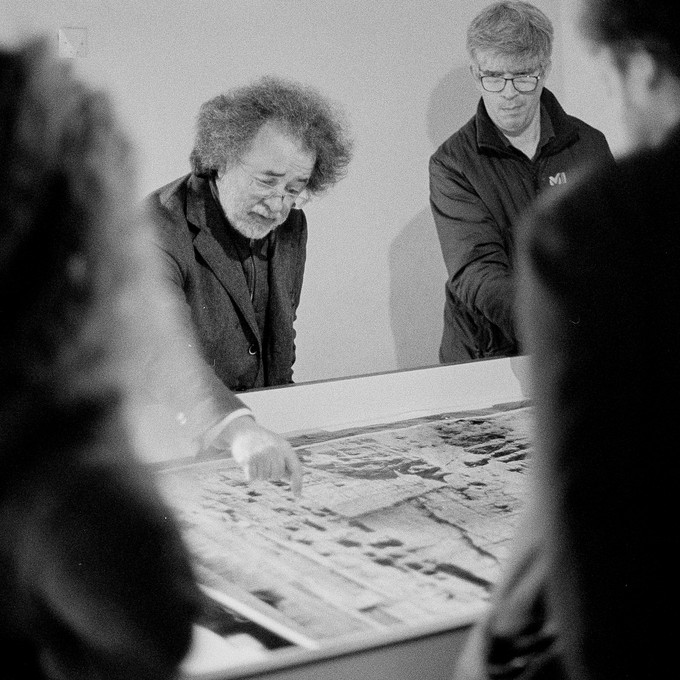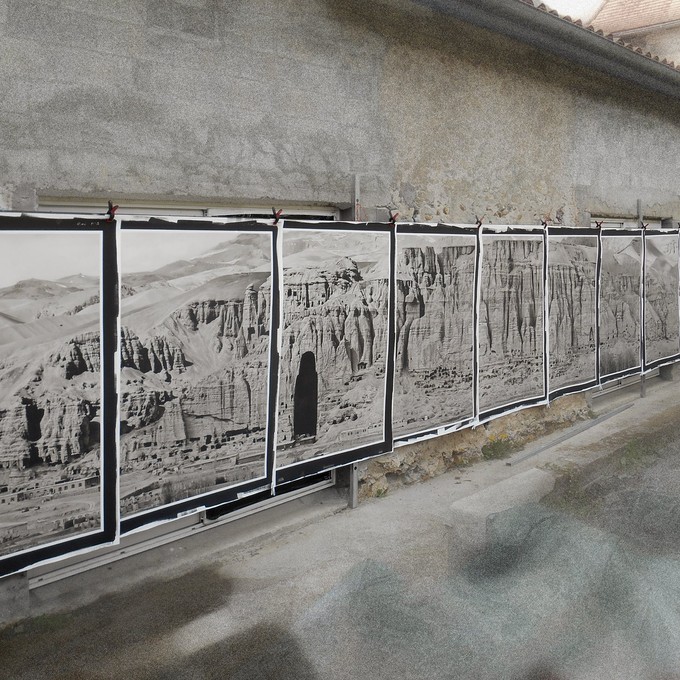Pascal Convert
Falaise de Bâmiyân - Installation - 2017
présentée dans le cadre de l'exposition panorama 19



###Memory through contact
Lost memory
The giant, sculpted Buddhas of Bamiyan above all owe their fame to their destruction by the Taliban on 11 March 2001, after they were declared idols, on the orders of the Mullah Omar, who had controlled Afghanistan since 1996.
At the time, the Western world had not fully taken into account this event, which was nevertheless part of a chronology that led to the destruction of the giant Twin Towers in New York, seven months later exactly, on 11 September 2001. The destruction of the two giant Buddhas of Bamiyan and the Twin Towers of New York accelerated the start of the twenty-first century and taught us that the return of cultural, economic and, especially, religious conflicts would go hand in hand with a toxic use of the power of the synchronicity of images. The first goal of “cultural purification” undertaken by the Islamic extremists was nothing other than to literally make us lose our memory. And with it our conscience.
Wounded memory
Located in the middle of Afghanistan, Bamiyan is a small town that spreads from east to west along a cliff facing the south. Between the third and seventh centuries, this cliff, consisting of flaky rock, a kilometre and a half long, sheltered a Buddhist monastery with a population of more than a thousand monks. This site was a major testament to the school of the Greco-Buddhist art of Gandhara. On the cliff, inside enormous recesses, two colossal statues of Buddha stood, one thirty-eight metres to the east, the other fifty-five metres to the west. Apart from these recesses, 750 grottos had been dug out of the cliff face, of which a tenth contained murals and clay sculptures and which we could describe as sanctuaries. The destruction (or the theft) of the sculptures, paintings and sculpted bas-reliefs had been systematic.
Memory despite everything
Although the Taliban believed they’d destroyed these giant statues, a shadow remains of them, like Hiroshima after the explosion of the atomic bomb. To destroy a sculpture is not merely “to smash rocks” as Mullah Omar claimed, it is to deny every human being the possibility to depict a living being. The fury with which the jihadists in Syria and Iraq destroy pre-Islamic
sculptures of course participates in propaganda. It also testifies to an absolute desire to destroy everything of the past, all history. But the explosion of hundreds of mines cannot totally destroy the Buddhas’s existence, a trace remains.
Memory through contact
During my stay in Bamiyan, as well as capturing a 3D scan by means of drones, I used a photographic shooting technique normally used to detect micro-cracks in windmill blades. This technology enabled the manufacture of a lifesize image of the cliff through a system of tiling four thousand photographs. In a dialectical way, hybridising the most contemporary and earliest technologies, I chose to produce a photographic print of the whole of the cliff by using the platinum-palladium process, a contact printing technique invented in 1880. Spectators can thus have the feeling of being in front of a photographic object whose visual and tactile qualities are those of a direct imprint.
